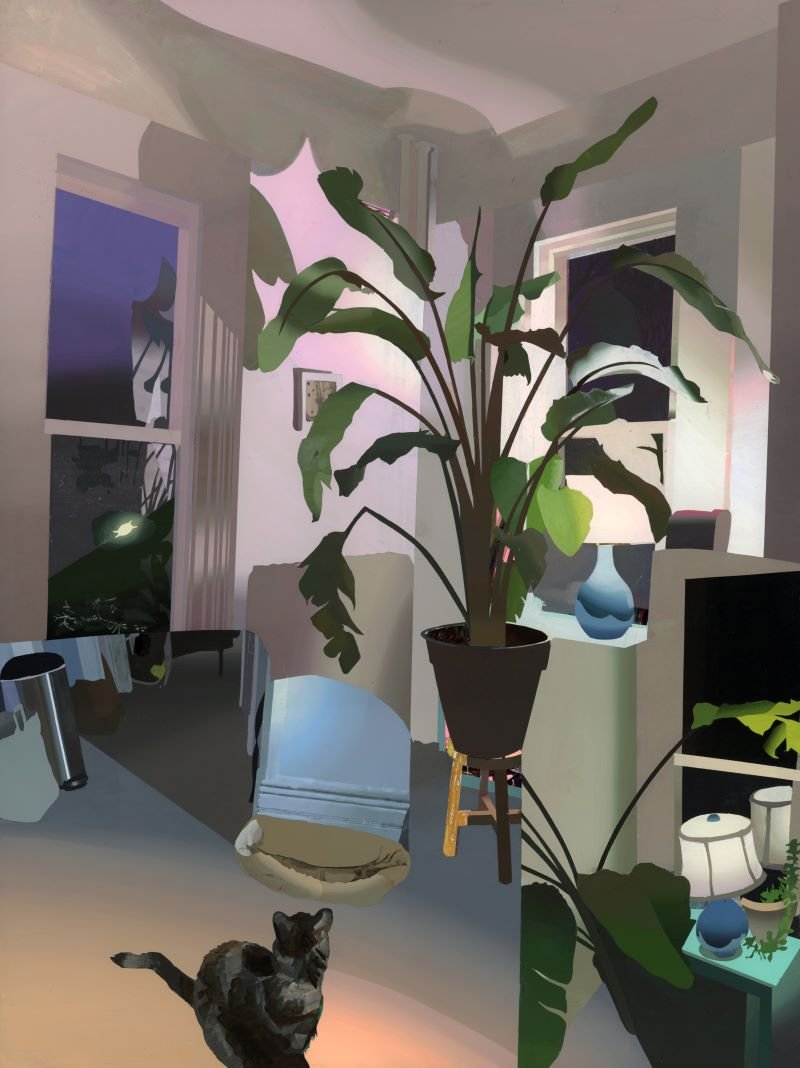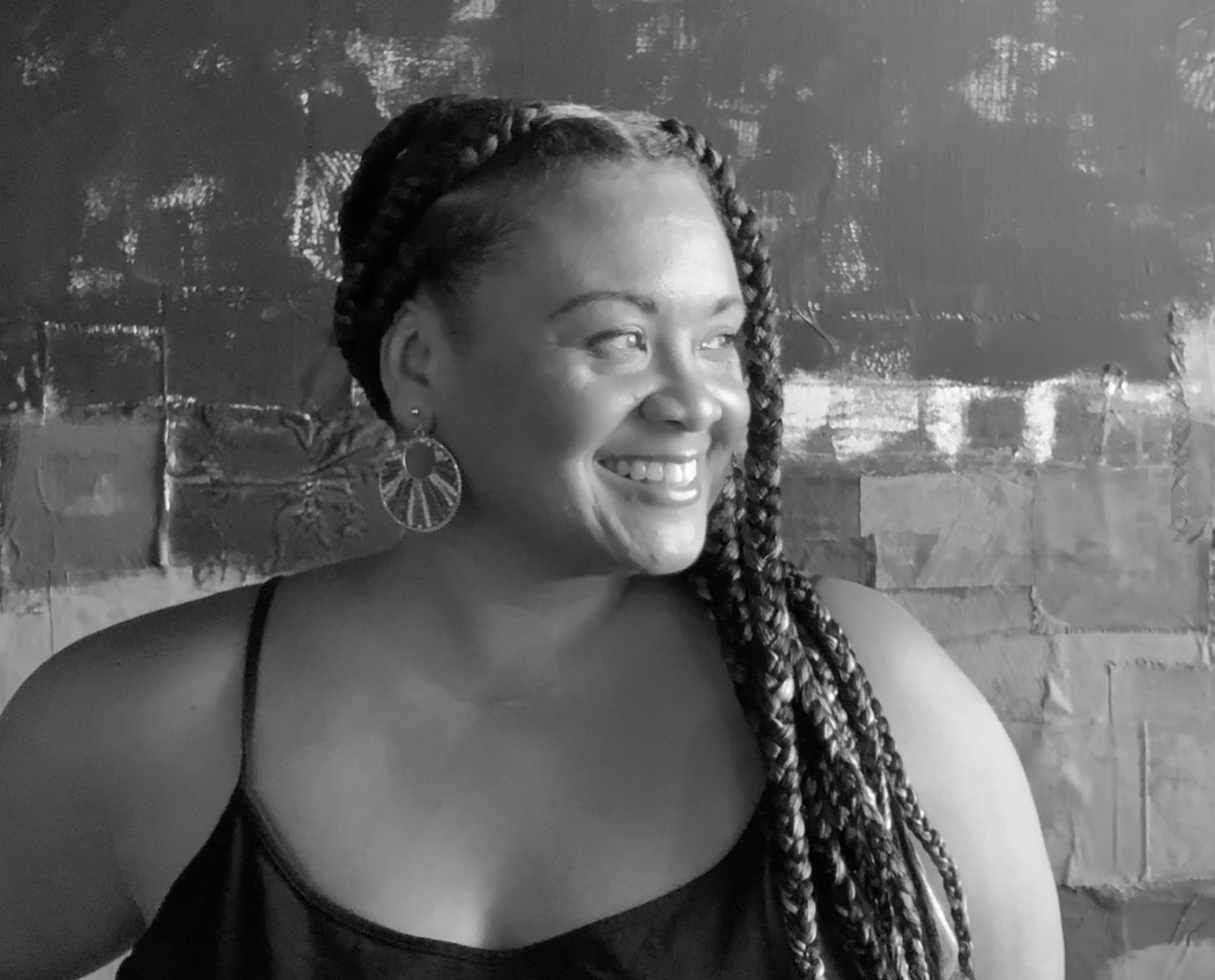The quiet possibilities of SIOBHAN MCBRIDE
“Lantern Fly Graveyard”, 2022, Acrylic gouache, paint marker, colored pencil on paper on panel, 18 x 24”
The works of Siobhan McBride are imbued with a sense of quiet mystery, often with slightly skewed perspectives and containing objects imprinted with unseen energies or tensions. In this interview, she talks about the inspirations and methods behind her beguiling creations.
Interview by Interlocutor Magazine
Many of the scenes in your work are ostensibly ordinary and domestic - bedrooms, kitchens, living rooms - and almost never with any people present, but there's a palpable sense of the occupants - a wine bottle, pill bottles, strewn clothing, etc. What do you think attracts you so much to these quiet yet still busy home life depictions?
The paintings come from everyday experience. All the spaces are personally significant to me. I put people in the paintings very infrequently because it creates too much of a leading narrative. I want the scenes to be ambiguous and open. So you can look and travel around the spaces uninterrupted.
I think that these heavily trafficked spaces expand beyond their physical dimensions. I was fascinated by The Lion, The Witch and the Wardrobe as a kid. The possibility of objects, furniture, to act as portals into other worlds where magic functions differently than it does in ours. Objects, especially those heavily used and frequently touched feel like extensions of one’s body already. Furniture, especially pieces that take the shape of your body, function like surrogates for people and that’s plenty of human influence already. The spaces are also often cluttered and piled with things, because that’s how I tend to occupy spaces.
“Five Doors”, 2022, Acrylic gouache, paint marker, colored pencil on paper on panel, 18 x 24”
A particularly intriguing aspect of your work is a sense of stillness but with an undercurrent of energy - a sort of hidden kinetic presence. Prominent light and shadow are often accompanied by slightly skewed, collage-like perspectives. What is the impact you are trying to create for the viewer? Would you say you're trying to depict an accumulation of moments in a space, as if we're viewing multiple snapshots of a place over time?
The paintings always have gradients and sharply taped edges. For me, gradients create movement whereas the hard edge is quite static, tightly demarcated, locked in space. For me, this contrast creates tension, even anxiety. Like tectonic plates under great pressure liable to slip past one another and release a lot of energy. It’s a space built of tension, buzzing, and charged with potential energy or bathed in the blush of an incident’s aftermath.
Sometimes I’m working from a single source image, sometimes multiple images of the same subject that are slightly different and other at times I’m piecing together different elements altogether. The piecing together can imply time passing even though the vignettes are persistently still. I suppose that these opposing forces reflect both a focused and a highly distractible interior world. Like when your eyes alight on something, an object or a scuff on the wall, that serves as a springboard for your mind to travel elsewhere into memory or other cul-du-sac of thought.
“Dust Devil”, 2022, Acrylic gouache and paint marker on paper on panel, 24 x 18”
Animals are seen more often than humans in your work (especially cats), but they are often the remnants or depictions of animals (figurines, busts, skulls, bones). What do you like most about displaying animals in these ways and how do you think that fits the overall tone of your work?
I love my cat so much. I imagine situations where she might get hurt and worry about it. Animals are never really bad, while humans are often quite horrible. I heard that a cat’s purr can heal your bones. Cats are said to be telepathic and are able to see into other dimensions. Animals have access, instinct, and insight that we just lack. I consider their appearance in the work a great stroke of luck and much less intrusive than a person. I want the paintings to be both familiar and strange and cats are just that!
“Escape Room”, 2022, Acrylic gouache, paint marker, colored pencil on paper on panel, 20 x 16”
“Salty Soup”, 2021, Acrylic gouache, paint marker, colored pencil on paper on panel, 18 x 24”
Who are some influences for you stylistically and thematically (visual artists or otherwise)?
I love Bonnard, the color and the way he uses a figure like furniture or simply melts the person into the wall. Objects, even entire spaces, often feel sentient and highly emotional in his paintings. The fantastic color he finds in shadow. It’s not my color world but I wish it was. I love Henri Rousseau, primarily the jungle paintings, for their otherworldliness and flatness. I love Michelangelo Antonioni films and Hayao Miyazaki animations both for how they value emptiness and moments of stillness, however brief.
I love the sensation of laughing so hard you burst into real tears. When hilarity morphs into sorrow and both sensations feel equally real and not so different from one another. I tend to be attracted to art that makes me cry/laugh - novels, films, podcasts. This emotional mash up seems really true and human to me. I never feel just good, I often feel good-bad. Did you see the Pixar film Coco? As I remember it, the dead experience a second death when all the living people who knew them finally forget them or die themselves. I love this idea. It’s such a cruelty, the double death, and strikingly beautiful at the same time.
“Tarantula Suicide”, 2019, Acrylic gouache, paint marker, colored pencil on paper on panel, 16 x 20”
“Deluge”, 2021, Acrylic gouache, paint marker, colored pencil on paper on panel, 24 x 18”
You double-majored in art and English - how do you think your studies in literature combined with visual art complement each other and have helped to shape your subject matter?
I had a creative writing concentration. I’m not sure my fiction was very good. Mostly because I was impatient with the puzzle of stringing together a meaningful narrative with an arc, resolution etc. My writing was mostly description and observations. With painting, whatever narrative I want to tell is available, visible all at once. While there is a hierarchy there is no set narrative arc, no beginning or end to negotiate, no one set way to traverse the surface. In the paintings I pull together the parts and force them to live together. It doesn’t have to make the same kind of sense and there’s no necessity for a narrative resolution.
“Canopy”, 2021, Acrylic gouache, paint marker, colored pencil on paper on panel, 18 x 24”
“Crime Podcast”, 2021, Acrylic gouache, paint marker, colored pencil on paper on panel, 18 x 24”
Many of your works incorporate paper on panel - what attracts you to this technique and what are some of the challenges and rewards with it?
I work with acrylic gouache, which doesn’t reactivate after it’s dry like traditional gouache. Gouache just loves paper. It doesn’t look as good or behave as seductively on any other surface, even really nice absorbent gesso that’s meant to mimic paper. The panel is necessary because I’m constantly working with blades. So I laminate hot press watercolor paper to wood panels with PVA glue and I get all the glory of paper with the stability and hardness of wood. Some of the masking and cutting I do gets complicated with many little bits. Each individual shape is masked and painted multiple times. So tape is often affixed to little previously painted bits and when the tape is lifted those bits might peel up. It’s separating from the inner layers of the paper and leaves a terrible pock mark. I have strategies that help, but a big percentage of the work on the painting is repainting and repairing the surface which is extra fragile because of gouache’s super matte surface. I think matte surfaces draw you in and glossy surfaces push you out. I want the paintings to be intimate single viewer experiences. I want you to spend time inches away from the surface imaginatively enveloped in the scene.
Another challenge due to the process is that the paintings take a long time and each one feels impossible at the start. Recently, I’ve begun to use paint markers, colored pencils and airbrush. Which have sped up the process, expanded the visual language, all while presenting their quirky complications and challenges.
“Night Walk (Jongno-gu)”, 2022, Acrylic gouache, paint marker, colored pencil on paper on panel, 18 x 24”
What are you currently working on, and are there any upcoming exhibits or series that you would like people to know about?
I was born in Seoul and adopted to the states at five-months-old. This summer I went back to Seoul for the first time. The reasons for not going earlier are too lengthy to describe here, but there are reasons. I went with the intention of making paintings about the trip and my research there. The trip was transformative. My adopted family is white which gave me very weird ideas about race and being Asian. It was a remarkable experience to be in an environment where everyone was Korean. When I visited the agency that managed my adoption in Seoul, a woman called me by my Korean name for the first time ever. I walked around the neighborhood where I was born. Everything I put in my mouth tasted amazing, even somehow familiar. I’m really excited about these paintings I am making about my trip, which are inevitably also about being adopted and what that’s been like.
View more of Siobhan’s work on her site and Instagram.
Please help us maintain our commitment to high-quality arts and culture coverage by making a donation via Patreon















